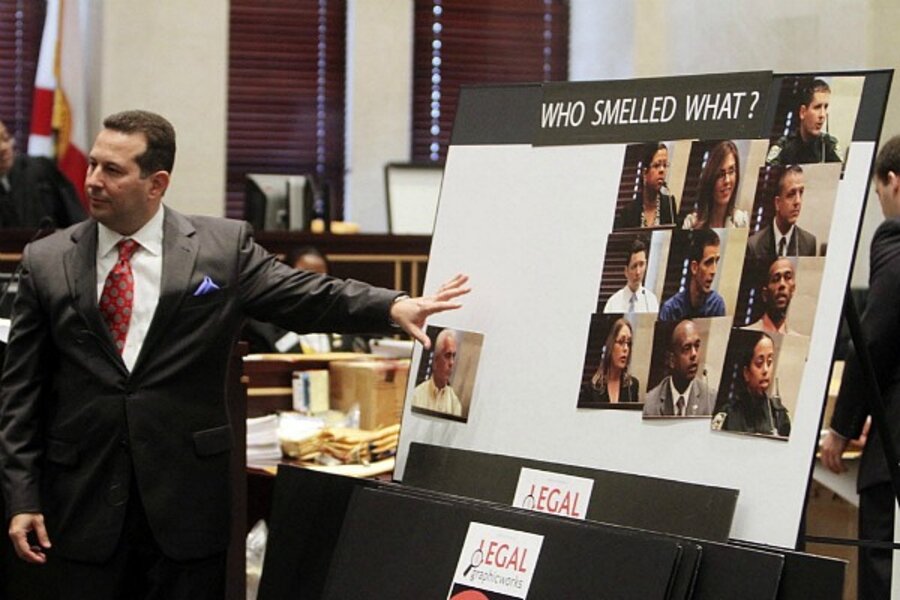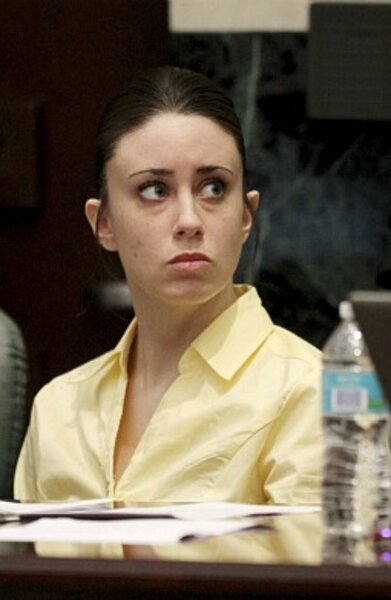Casey Anthony trial: As case draws to a close, is the duct tape key?
Loading...
The presence of three pieces of duct tape found with the skeletal remains of Casey Anthony’s two-year-old daughter prove the toddler’s death was an act of premeditated murder, a state prosecutor said on Sunday in arguments at the conclusion of the Florida mother’s month-long trial.
“There is no good reason to put duct tape over the face of a child,” Assistant State Attorney Jeff Ashton told the jurors.
The prosecutor’s comments came as both sides in the contentious, high-profile trial in Orlando presented closing arguments. Jury deliberations are expected to begin on Monday.
IN PICTURES: Key players in the Casey Anthony trial
Defense Lawyer Jose Baez said in his own closing that Caylee’s death was “an accident that snowballed out of control.” He said prosecutors and investigators were intent on proving murder, even when the evidence didn’t add up.
“They didn’t want to consider that there was something wrong with this girl, instead they had a murder case,” he said. “That’s all they were interested in was murder. There is nothing sexy about a drowning. There is nothing interesting about a drowning.”
Casey Anthony is charged with first-degree murder in the June 2008 disappearance and death of her daughter, Caylee. The girl’s skeletal remains were discovered Dec. 11, 2008 in a wooded area a quarter-mile from the family home.
If convicted, Ms. Anthony faces a potential death sentence.
Prosecutors say the mother subdued her daughter with chloroform and then used duct tape to suffocate her. They say she hid the body in her car for several days before dumping the remains in the woods.
Defense lawyers say the toddler accidentally drowned in the family swimming pool. Rather than calling police or telling her mother, Casey went into denial and pretended nothing was wrong, her lawyers say.
“We all know Casey acted inappropriately and made some bad mistakes and bad decisions,” Baez said. “She should have called the police and not blocked this out. She should have reported this death.”
Baez spent much of his closing argument attacking the quality of the state’s evidence, calling it a “forensic fantasy and nothing more.”
“Reasonable doubt lives here, it is throughout the case, it is everywhere” he told the jury. “You can’t trust this evidence.”
Is the duct tape key?
Mr. Ashton, the prosecutor, focused near the end of his argument on the importance of there being three pieces of duct tape found with Caylee’s remains.
He said someone might use duct tape in a brutal way to silence a child. “But why do you need three,” he asked the jury.
“Because your purpose is to make sure the child cannot breathe,” Ashton answered. “The first piece goes over the mouth. The second piece goes over the nose. But you could still have some gaps so you have to be thorough – you have to have three.”
Ashton continued: “One-two-three, and then the child dies.”
“That, ladies and gentlemen, is proof beyond a reasonable doubt of how Caylee died,” he said.
Defense Attorney Cheney Mason disagreed. He said it was not possible to know the precise location of the duct tape over both the mouth and nose since all that remained was a skull.
He said the county medical examiner testified only that the tape was “in the vicinity” of the mouth. Another prosecution witness said the tape “could have” covered both the nose and mouth, he said.
“How many times did you hear someone say could be, might be, maybe?” he asked the jurors. “This is not a could have, may have sort of thing, this is a charge of murder in the first degree.”
Baez urged the jurors to reject all testimony concerning the wooded scene where Caylee’s remains were found – including the duct tape. “The scene was contaminated and maybe staged,” he said.
He noted discrepancies among statements given to police by Roy Kronk, the man who found the remains. On August 11, 2008, he told police he saw a white, round object that he thought was a skull. During the next three days, Mr. Kronk made three more phone calls, but police never followed up. Four months later, on December 11, with the search for Caylee still underway, Kronk returned to the wooded area and again notified police.
In an initial written statement at the scene on Dec. 11, Kronk told police that he lifted a bag up and that a skull fell out. The statement is odd because four months earlier Kronk had told police that he’d seen a skull in the open, not in a bag.
“Who put it back in the bag,” Baez asked. “Somebody had to.”
Later Kronk changed his statement to investigators, saying that he saw the skull outside the bag and lifted it slightly off the ground using his meter reading stick.
Defense attorneys wondered why Kronk didn’t go to the media with his discovery in August when the police ignored him. Throughout those four months there was a nationwide search underway for Caylee.
“Something is wrong here,” Baez said. “Something is very shady.”
Ashton walked the jurors through the 31 days between the last time anyone saw Caylee alive on June 16, 2008, and when Casey finally admitted to her mother that the child was missing.
Ashton said she constructed a web of lies to prevent her mother from learning the truth – that the toddler was dead. He said Casey killed Caylee because she was tired of being a mother and wanted the freedom to spend nights with her boyfriend and party with her friends.
“She has a choice,” he said, “a life tethered to a child or a life free to be 22 [years old].”
The prosecutor said Casey did not have the option of giving her mother, Cindy, custody of Caylee. “Cindy would never allow Casey to walk away,” he said. “Cindy wanted her daughter to be a mom and act like a mom.”
Casey Anthony an acknowledged liar
Baez did not dispute that his client is an accomplished liar. “I’m not proud of the way Casey behaved. I don’t think anyone here can justify her actions,” he said. “But they do not constitute murder.”
The attorney said every witness at the trial who personally knew Casey testified that she was a loving, attentive mother and that Caylee loved her.
He dismissed the prosecution’s suggested motive. “She wants her freedom? You kill someone to get your freedom?” Baez asked. “That’s nonsense.”
Prosecutors will present the final part of their closing statement on Monday morning. Next, Chief Judge Belvin Perry will give the jury legal instructions for their deliberations and the deliberations will begin.
The jurors have been sequestered throughout the trial in an Orlando hotel to prevent them from seeing media coverage of the case.
IN PICTURES: Key players in the Casey Anthony trial






